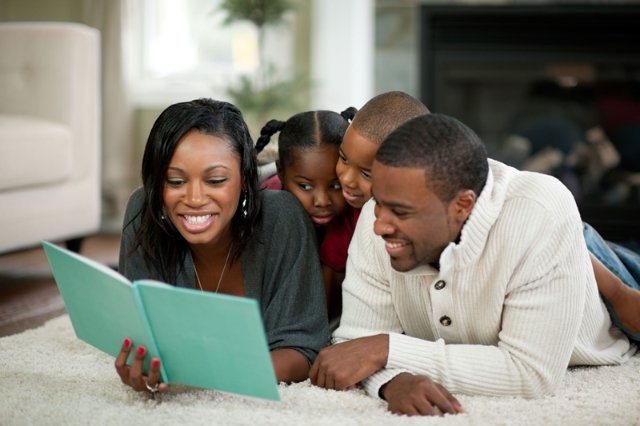When Jessica Share bought sperm from a sperm bank in order to start a family, she never imagined that more than a decade later she would meet the donor – and would feel a strong attraction to him.
In 2005, when my eldest daughter was born, I became the first lesbian parent I had ever met. This was the American Midwest, and the only lesbians I’d heard about with children had usually given birth to them in a previous, heterosexual relationship. My girlfriend and I, however, had had to start from scratch.
Ever since we’d met we had dreamed about having kids together. We decided on four and together we chose their names. The next step was more difficult.
My girlfriend suggested her brother-in-law could help. He was receptive, but I took a gay and lesbian legal rights course offered by the college of law at my university, and quickly gave up on the idea of a known donor. Courts had been known to give them custody rights, calling their gift of sperm an act of parenting. When birth moms died, children were removed from their homes to be placed with men they barely knew.
Luckily, we discovered a sperm bank that shipped right to our home, where the anonymous donors signed paperwork that legally barred them from ever seeking custody of the children they helped create.
Because I was writing a doctoral dissertation at home, I would carry the first baby. We matched the donor to my partner – who was by now my wife – choosing someone of average height and weight who had studied literature, had wavy brown hair, and liked sports.
The donor listed his profession as a writer, musician, and taxi driver. My wife and I romantically imagined he was refusing to get a desk job, but instead collecting the stories of those he’d pick up in his cab, readying to write the Great American Novel.
There was little additional information on the donor, but the rudimentary health history that donors complete assured us we knew a lot more than we would have ever gotten from a casual boyfriend. We never saw a picture.
Getting pregnant at home was fascinating – a home science experiment that I took seriously. Sperm supplied to buyers rarely tops half a lip-balm cap of liquid and it comes nestled in a 3ft-tall liquid nitrogen tank with an overnight shipping return label. Gloves are required for extricating the tiny plastic vial, which first sits on the counter and then warms to body temperature in the hand. The local pharmacist can supply a tiny syringe to use to inseminate. Because things that have been frozen aren’t as robust as their fresh counterparts, revived sperm live just a single day. If an egg is not waiting for them, they will die.
Getting every last sperm as close to the egg as possible became a solemn monthly ritual. I would inseminate twice, just to cover the entire possible window an egg might be waiting. After all, it takes five full hours to even swim the length of a uterus. I learned this, along with every fact I could related to using donor semen to conceive.
Seven months later I was pregnant with our first child and my wife and I were overjoyed.
I told my grandparents that we were expecting. My grandmother gasped, “Oh, it’s due in June!” and my grandfather asked curiously about artificial insemination.
We gave hardly a thought to the donor that we assumed we would never meet. My wife was particularly hostile to the idea of ever letting our children know him – she felt that love made a family, and I agreed. But we paid homage to his literary genes by reading thousands of books to our gestating bookworm.
When Alice was born, she was perfect.

All thoughts that the particularity of the DNA wasn’t important went out the window. We agreed that we should clone this incredible being we had created with our love. We ordered sperm from the same donor and repeated the whole process, my wife giving birth to our second daughter when Alice was 18 months old.
Both girls shared plenty of traits. Knowing how my wife and I looked as children, it became a fun pastime to pick out the characteristics only the girls shared: they were both extraordinarily tall, not average height, as the donor claimed to be. Both had long, thin mouths, small noses, electric eyes that look like emeralds under water, and impeccable vocabularies.

But when the girls were one and three years old, my wife declared she was ending our relationship. There had been no conflict in our family, so I was shocked and heartbroken. She said she did not want to talk about it and there was nothing I could do to repair our marriage.
I continued parenting the sisters five days a week for a few years. But when Alice was 10, my ex-partner blocked Alice on her phone, cut off all contact with her, and refused to return her younger sister following a vacation.
This remains the case today.
On my ex-wife’s side of the family, Alice’s grandparents, aunts, uncles, and cousins haven’t so much sent her a birthday greeting in two years. Alice spends her days dreaming of the sister she was raised with and who she is afraid she will never see again.
Alice knows more deeply than most children that family is neither genetically created nor forged through parenting alone. Parenting did not make her mama stay. And although genetics was a small piece of what her family looked like for a decade, that also seemed like an unimportant part of who she was.
However, Alice wondered where her ancestors came from. My mother had often told stories about the family’s Cornish heritage to anyone who would listen. Wanting to know what her genetic heritage was, Alice requested a DNA testing kit from her grandmother for Christmas when she was 11 years old.
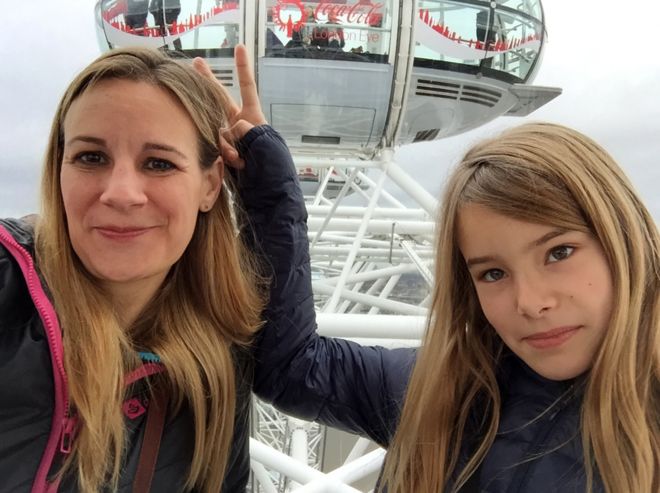
The results came back about eight weeks later. I clicked on the DNA Relatives section of the site, not thinking anything would come of it. But the first thing I read was, “Aaron Long: 50%. Father.”
“Bryce Gallo: 25%. Half-brother” was right behind.
Of course, I had known this might happen, but it hadn’t seemed likely. Before writing a note on the site, I searched for Aaron online to see what I could learn.
There are a lot of Aaron Longs in the world, so I set to work finding “the one.” I searched a professional social network for clues. Squinting at each Aaron Long, I wondered if I would recognise the donor right away.
One of the sperm vials listed the date of donation (1994), which helped narrow down birth and college graduation years. There was just one man with a master’s degree in literature in the correct age range, with the name Aaron Long. In his photo, he was wearing an olive-green silk turban and blowing a trombone. His profile said he was employed as a “communications specialist” and placed him in Seattle. A writer and a musician.
On another social media site, I discovered a Seattleite named Aaron Long with the correct workplace and with photos of each of his school portraits through the years.
There was no doubt. My daughters make that stupid face.
I quickly wrote a message to him on the DNA testing site. It read:
Hi Aaron, I actually have two daughters who’d match you (my ex has my youngest daughter; she’s not on the DNA testing site). If you’re interested in trading family photos, etc., we’re available.
I used the “curiosity hook,” thinking he’d have to write back to see pictures of my youngest daughter. Aaron wrote back immediately, sharing details I already knew from my sleuthing. He asked if I had any questions for him, and I asked if he was the shortest person in his family. I already knew the answer. He was.
We agreed to become friends on a social networking site and Aaron sent a 50-page long life history, which I devoured. He’d spent several years in a band in the town where we lived. How many times had we walked past him in the supermarket, I wondered?
I also wrote to Bryce, who had just graduated college. He told me he found Madi, a 19-year-old half-sister, and had also been in touch with other parents. He said there were a total of six children from Aaron, and that mine were #7 and #8. Bryce told me he had been raised with a little sister, but perhaps Madi, an only child, would be interested in developing a relationship with Alice?
Alice had to be cajoled into writing her life story for Aaron, and getting to know her DNA relatives is only mildly exciting for her. She is grieving the loss of her sister. I try to tell her she has a special job of guarding these people, getting to know them, and keeping them for her sister when she is able to meet them. However, she would rather have her sister.
A few months later, Bryce and Madi made plans to visit Aaron in Seattle. Alice was interested to see whether the siblings and Aaron resembled her. I agreed to let her take part.
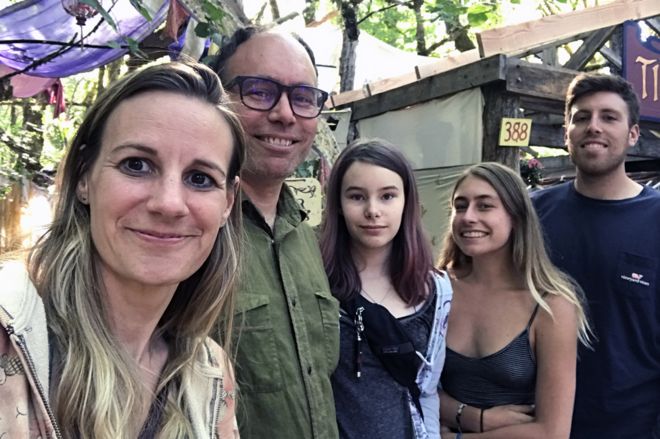
Aaron hosted a party to which he invited multiple housemates, friends from elementary school, high school, and college. All of his ex-girlfriends, and their new partners and children, were invited. They would all camp on the roof and celebrate meeting his biological children. I quickly learned that Aaron does not have a single friend he wouldn’t welcome back into his fold.
We visited the local sculpture garden, played a “nature or nurture” game that illuminated some shocking similarities, and took a road trip to an arts festival.
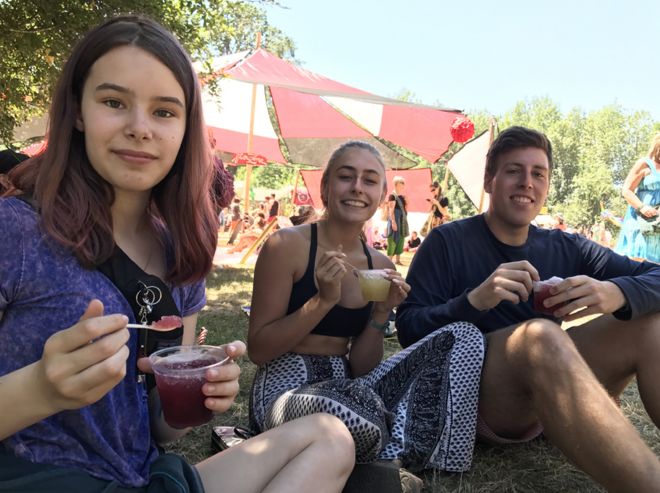
In spite of Bryce’s initial protests, he and Madi vied for Alice’s affection. During the vacation when they met, all three went out to grab dinner. Alice came back with ice cream from one and pizza from the other. Later, Bryce mailed her a star of David. Madi sent an amethyst. Both are symbols of the different things she has in common with each.
I had been dating a man for a few years who is also named Aaron David, with a similar last name. On our vacation, donor Aaron flirtatiously suggested there had been a mix-up at the Bureau of Boyfriends. I smiled and demurred. I was already in a relationship and was conscious that donor Aaron was an important person to my kids, but not someone who should necessarily be part of my own life. I didn’t want to spoil it for them.
When my relationship with old Aaron ended, I found myself wondering if my children’s person could also be my person, and if Seattle was a place for us to land while we figured it out. Aaron’s kindness and continued connection with his exes convinced me that it would be safe to give it a chance.
One night, we walked the neighbourhood and sat in a local cemetery, talking about DNA, what the kids were like, and what our dreams were.
When heterosexual people meet and date and get married, they often look with devotion at one another and think it would be wonderful to have little people who look like both of them. I’d already spent a decade with those little people. I spent my first date with Aaron relaying their lives to him. I already knew him and knew he was just like these people I love more than anyone else in the world. He was already family in some ways. His smirk and his colouring are those of my youngest daughter. His empathy and socialism? My eldest.

Jessica describes meeting the sperm donor who’d fathered her daughter
It’s hard to tell if DNA played a role in our relationship. I know that I am attracted to Aaron for all the reasons that seemed wonderful when shopping for him in a sperm donor catalogue years ago. He is thoughtful, persistent, and academically-minded. He is enchanted by words. He is empathetic, versed in stories about people and the strange things they sometimes do. He doesn’t much care what’s expected of him. He often plays his own music. To his own drum. Sometimes in a turban.
How many people think a cab-driving musician and writer is the ideal genetic material?
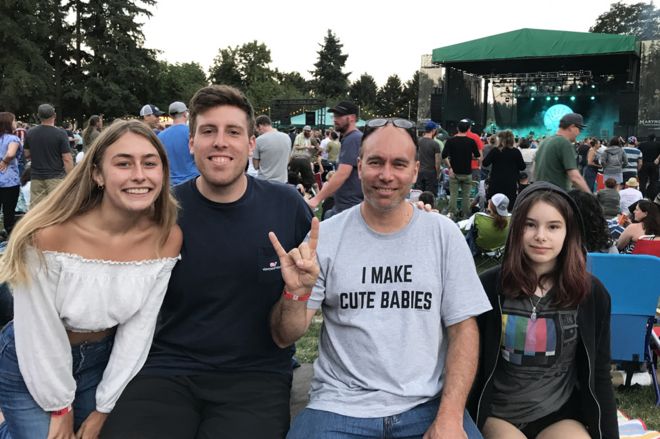
Alice and I moved into Aaron’s co-op in summer 2017. It’s such a large building that there was plenty of room for another of Aaron’s bio-kids to move in. Madi, originally from the east coast, found Aaron’s (and Seattle’s) right-brained left-wing personality endearing and moved out this spring to live with all of us.
We’ve even joined a Girl Scout troop with another of Aaron’s bio-kids who is the age of my youngest daughter and lives about an hour away.
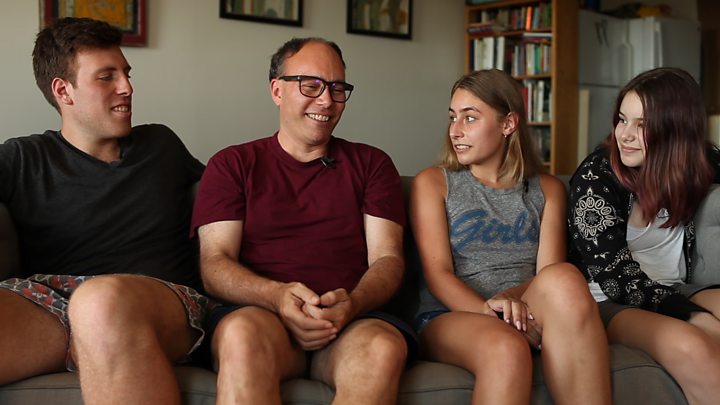
I quickly discovered that as a mom, I would gladly take any of our new half-siblings right inside, make them lunch, do their laundry, and take care of them forever. They are the siblings of my children, the genetic aunts and uncles of my grandchildren. I don’t parent them, but I feel inexplicably drawn toward feeding them. Some are the spitting image of Alice. Others resemble my youngest daughter. They don’t all look like Aaron, but they undeniably resemble one another.
Aaron’s ageing mom has also moved in, along with her cat, Bill. Down the hall, Alice and I got a kitten. By making a family in all these new ways through the years, I’ve learned more about what family means than anyone would want to. DNA has become far more important than it was when I first picked a donor from a page. Yet it hasn’t replaced the truism that families are built on love, not genes. Being open to that love is what ultimately makes a family. Everyone can be welcomed and stay in the fold. There is room for many different kinds of relationships.
Who knows how many more of Aaron’s bio-kids there are – he’s estimated there could be as many as 67. The building may eventually cease to accommodate all of them, but I’ve got the sandwiches, and the door’s open.
All stills provided by Jessica Share.

